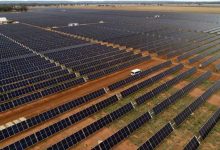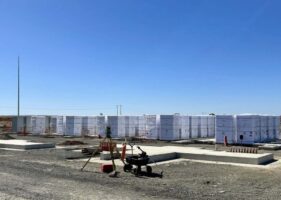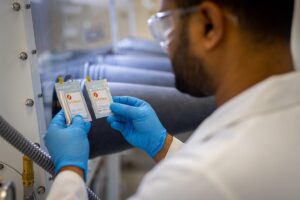Australian solar farms – at least those not locked into long term supply contracts – are still making hay when the sun shines as electricity prices remained high in the September quarter.
Genex Power, one of the few listed solar farm owners, and so a rare source of information on their performance, has confirmed that the 50MW Jemalong solar farm in NSW received an average price of $180/MWh over the three months to September 30.
This compares to a record $214/MWh pocketed in the June quarter, when Australia’s electricity market lurched from crisis and then market suspension, and reflects both the high wholesale electricity prices and high prices for large scale generation certificates (LGCs).
According to Genex, around 62 per cent (or around $128/MWh) of their revenue came from the high electricity prices, while another $52/MWh came from cost of LGCs.
High prices in electricity and LGC markets
The high electricity prices have been driven by the soaring cost of fossil fuels – coal and gas – and made worse (particularly in the June quarter) by multiple outages. The high LGC price represents the decision by many corporate buyers to surrender, rather than cash in on, their green electricity purchases.
The other solar farm owned by Genex, the 50MW Kidston solar plant in Queensland, earned an average $129/MWh from wholesale electricity prices in the quarter. That was well down from the $184/MWh it pocked it in the June quarter.
The Kidston solar farm does not generate any revenue to Genex from LGCs as these are handed to the Queensland government under the terms of an underwriting agreement.
The strong performance from its two operating assets came as Genex – currently the subject of a $350 million takeover offer from a consortium led by Atlassian co-founder Scott Farquhar – also reported issues at its Kidston pumped hydro project, but insisted it was still on time and on budget.
Pumped hydro project halted by influx of water
It revealed that unexpected geological issues at the site – in an old gold mine in north Queensland – caused an influx of water in mid-Setrember, causing delays to tunnelling activities.
“While there has been some modest delay to underground works, at this stage it is not anticipated that there will be an increase in the project cost, with adequate contingency funds held in the overall project budget,” it said.
It added that the Kidston pumped hydro facility, the first to be built in nearly four decades in Australia, should still be energised in less than two years.
Genex is also building the 50MW/100MWh Bouldercombe battery and says that project remains on time and within budget and should be operating by late next year.
Its other projects include a 200MW wind addition to the Kidston complex, and the first 400MW/1600MWh battery stage of the potentially huge battery and solar complex at Bulli Creek, also in Queensland.










